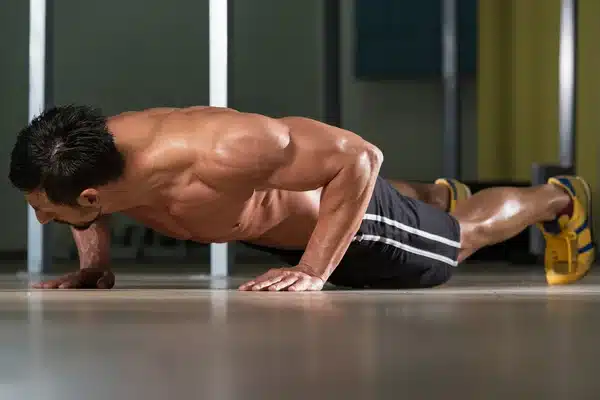
By shaping your upper chest, you can make your body look better by defining and balancing It. Push-ups are a classic bodyweight exercise that can work the upper chest well when done in Certain ways and with certain variations. This guide has strategies and hints for doing push-ups that will help you get a better upper chest.
Why Push-Ups Are Good for Your Chest
Push-ups are compound exercises because they work out many muscle groups, including the chest, shoulders, triceps, and core. So, Push-ups for upper chest are good for building strength and endurance in your muscles. You can also make your chest bigger by doing the right sets and body angles. This will make your upper body stronger without using any weights or equipment.
How to Get the Most Out of Push-Ups for Building Your Upper Chest
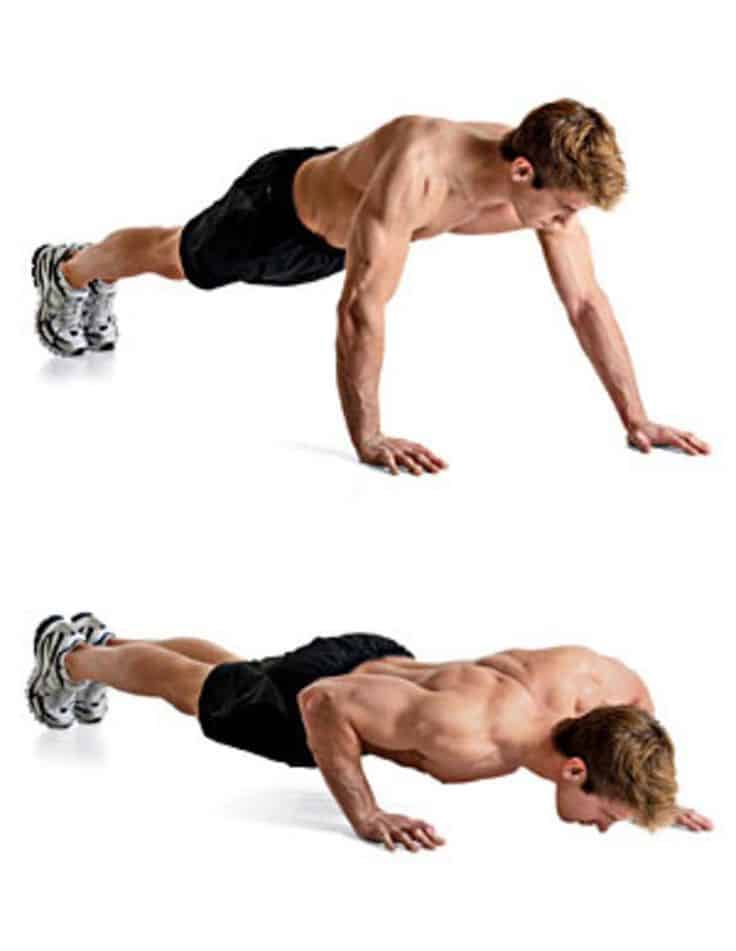
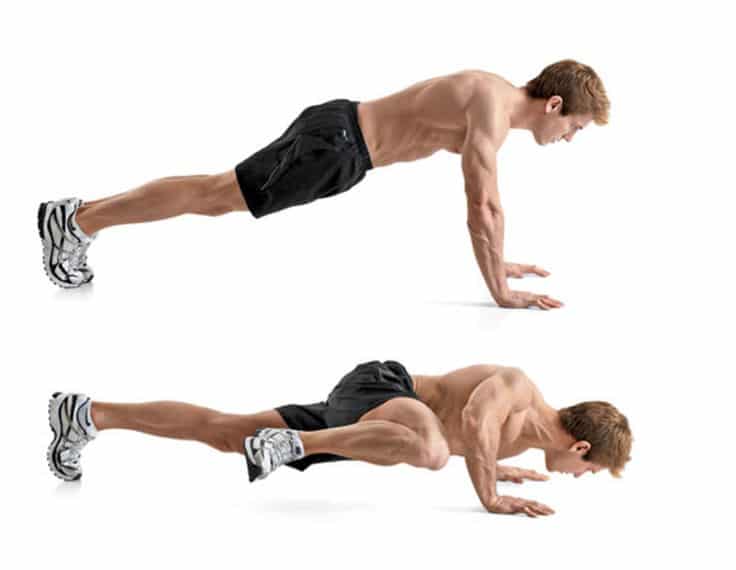
Start with the Right Body Angle
The angle of the body during a push-up affects how the tension is spread across the chest. When the feet are raised onto a stable surface like a bench or box, the body tilts down, which makes the upper chest work harder. This decline position makes the clavicular head work harder than flat or incline push-ups.
When you do push-ups, keep your body straight from your shoulders to your heels. It not only keeps the core engaged, but it also stops too much force from being put on the lower back, which is important for moving without getting hurt.
Perfect Your Hand Placement
By placing hands differently, at shoulder-width apart, one tends to engage different muscles. When people put their hands a little wider than shoulder-width apart, they tend to use more of their chest muscles. If your hands are too close together, the focus moves to the triceps, which makes the workout less effective for targeting the clavicular head.
Also, the fingers should be spread out evenly so that the weight is evenly distributed through the palms and the body weight is engaged. This small change makes things more stable, which lowers the risk of slipping or getting out of alignment while moving.
Push-Ups Workout That Work the Upper Chest Well
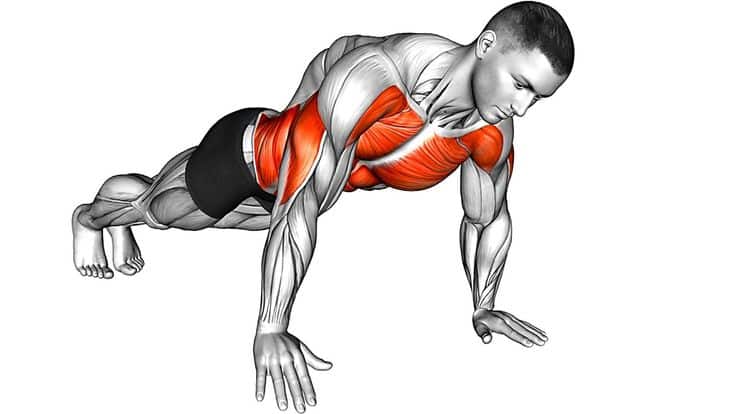
After mastering foundational techniques, specific push-up variations can be targeted toward routines to keep workouts challenging while shifting focus to the upper chest.
- Cut back on push-ups to build your upper chest.
Decline push-ups are thought to be one of the best ways to work out the clavicular head. If you lift your feet and lower your hands while doing push-ups, the line of force changes so that the upper chest becomes the main mover. When doing this variation, keep your spine straight and don’t let your lower back arch or dip too much.
- Pike Push-Ups to Get Your Body Moving Upward
The pike push-up is another great way to work out the muscles in your upper chest and shoulders. Positioning your body in a downward-facing V creates a vertical press. This change focuses on your upper chest and shoulders instead of your lower chest. Keeping your neck in line with your spine, lower your upper body to the floor. Moving in this position in a controlled way makes you more stable and engages your upper chest more.
- Wide-Grip Push-Ups for More Chest Tension
When you do a wide grip push-up with your hands farther apart, it takes less work from your triceps and more work from your chest muscles, especially the upper fibers. It’s also important to have the right posture; keeping your elbows slightly out to the side will help activate your pectorals even more.
- Push-Ups with Explosive Plyometrics
The plyometric push-up is a difficult exercise that helps you move quickly. It mostly works the upper body, with a focus on the chest. Push up hard enough that your hands come off the ground with each rep. First, you need to master other variations because this one requires a lot of strength in your core and upper body.
Common Mistakes to Avoid When Doing Push-Ups
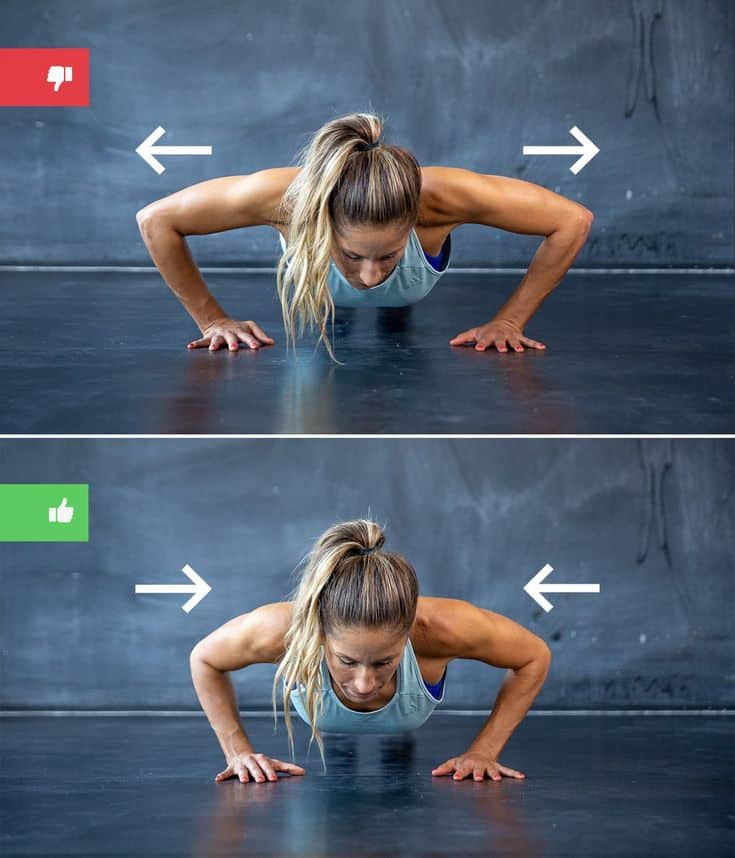
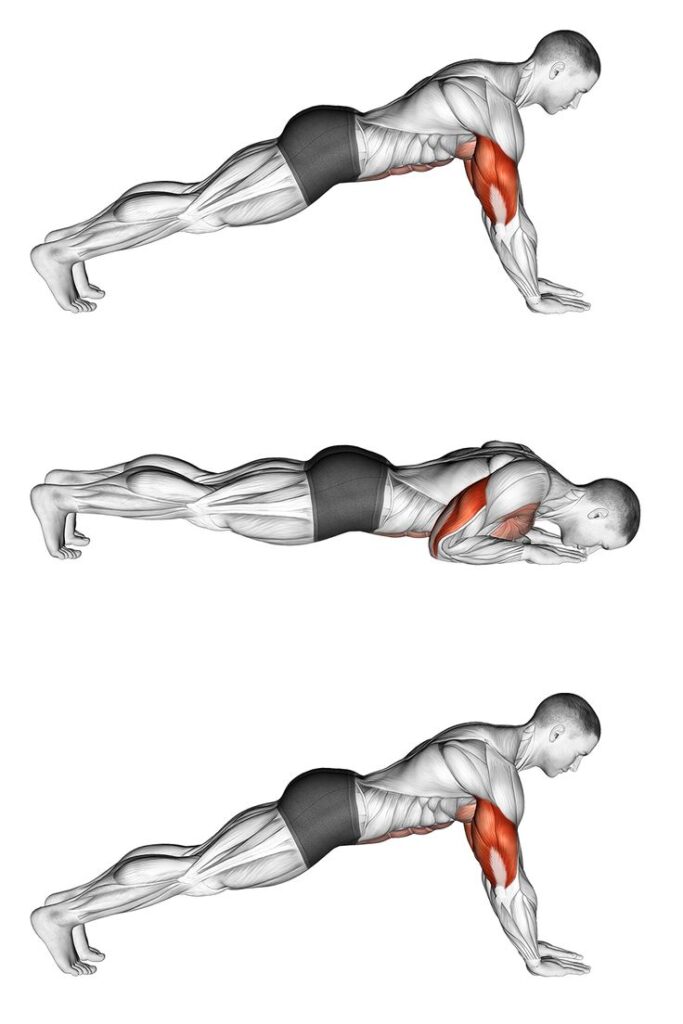
There are some mistakes, some of which are very common, that could stop you from getting better or, worse, hurt yourself while doing push-ups. One of the most common mistakes is letting your hips sag. Not only does it make your form weaker, but it also puts too much stress on the lower spine, which is not good. Using your core muscles while doing rounded movements can help you stay in line. It also helps spread out the force better.
People often make the mistake of relying too much on either their arms or shoulders and completely ignoring their chest. To better work your pectoral muscles, try “squeezing” your chest muscles during every press. It’s also important to remember that doing repetitions too quickly can hurt your form and limit the work your muscles can do. Instead, slow and purposeful movements should be followed by the best results.
- 0shares
- Facebook0
- Pinterest0
- Twitter0



